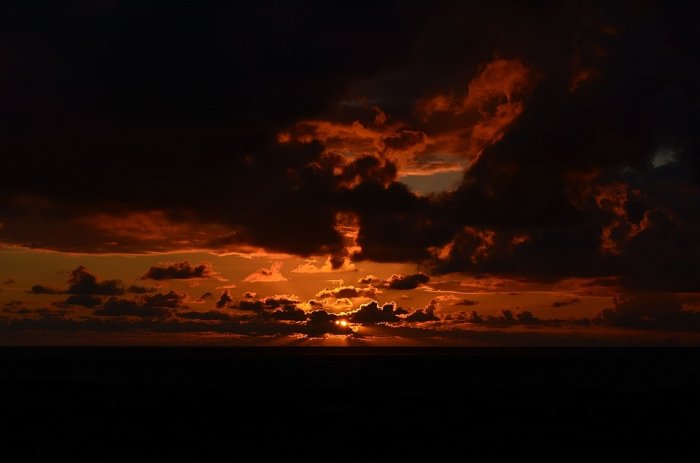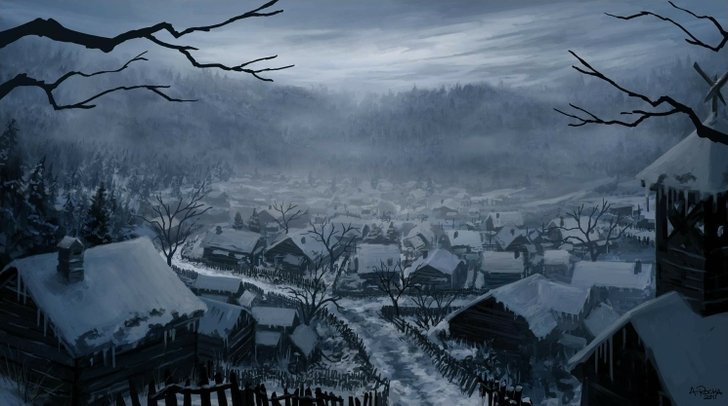Mysterious Black Cloud Caused A Global Catastrophe In 536 A.D. And 18 Months Of Darkness
Jan Bartek - AncientPages.com - Living in darkness for 18 full months can be challenging even to those who do not appreciate the Sun very much. Something unsettling happened in 536 A.D. There were few indications people could anticipate the horror that led to one of the greatest natural disasters in human history.
The catastrophe in 536 A.D. led to the death of millions of people worldwide. Nevertheless, this incident was long unheard of until two scientists "re-discovered" the event and brought it to light.
The Mysterious Black Cloud
"In 1983, two researchers at the Goddard Institute for Space Studies, NASA, Richard Stothers and Michael Rampino, published a list of all ancient volcanic eruptions known from Mediterranean historical sources. Their list included a persistent dust veil or dry fog that darkened the sky for about a year in 536-37 C.E., bringing about a cold, drought, and food shortages in the Mediterranean area or, as it has since been claimed all over the northern hemisphere. Several ancient writers, such as Cassiodorus, Prokopios, John Lydos, and some Syriac chronicles, refer to the dark cloud. Somewhat surprisingly, these sources had been overlooked by classical scholars for a long time." 1
The arrival of the dark cloud was the beginning of the disaster. Credit: Public Domain
Michael the Syrian who mentioned this event wrote that "[T]he sun became dark and its darkness lasted for one and a half years [...] Each day it shone for about four hours and still this light was only a feeble shadow [...] the fruits did not ripen and the wine tasted like sour grapes."
Prokopios, who lived in both Africa and Italy at the time, said almost the thing: "For the sun gave forth its light without brightness, like the moon, during this whole year, and it seemed exceedingly like the sun in eclipse, for the beams it shed were not clear nor such as it is accustomed to shed."
Ancient Accounts Of The Climate Catastrophe In 536 A.D.
Scientists searched for clues to the cause of this extreme climate event and examined several ancient sources. In Poetic Edda, the anonymous author mentions the Fimbulwinter that has long been treated as a mythological event. However, this view has changed in recent years.
"Scientists are now seriously considering the possibility the Fimbulwinter described in Norse mythology was based on real events. Researchers think Fimbulwinter is related to the extreme weather events of 535–536, which resulted in a notable drop in temperature across northern Europe.
According to other ancient sources, this was a period when the Sun was bluish, weak, and obscured. People threw no shadow on the ground, and even the Moon was obscured. There was no heat, and the crops died. This must have been due to a very large volcanic eruption and subsequent ash cloud that spread across the world. This outbreak was previously unknown, but researchers have come across evidence, such for example ice cores from Greenland that confirm extreme weather conditions at the time.
In Northern Sweden, the average temperature during summer dropped by three to four degrees.
This indicates there were strong climate changes that led to increased mortality among humans. Very old grave findings and depictions on ancient runes stones offer evidence of a very harsh and long winter period." 2
"Tree ring records, historical accounts, and archaeological evidence suggest that effects were especially pronounced in the northern hemisphere where unseasonably cold summer temperatures led to crop failures and widespread famine from China to the Mediterranean to Mesoamerica." 3
This severe climate change affected people more or less all over the world. In certain of China, the climate conditions led to the starvation of 70 % of the population.
How The Global Catastrophe In 536 A.D. Changed The World
The lack of proper light and heat affected all living beings, and "the climate of the entire planet began to spin out of control. The result, direct or indirect was climatic chaos, famine, migration, war, and massive political change on virtually every continent. As the engine for this extraordinary intraregional change in four great areas of the world – Afro-Eurasia (from Mongolia to Britain, from Scandinavia to southern Africa), the Far East (China, Korea, Japan), Mesoamerica (Mexico/Central America), and South America – the disaster altered world history dramatically and permanently." 4
What Caused The Climate Disaster In 536 A.D.?
The exact cause behind the global climate catastrophe is still undermined. "Previous studies have invoked either a comet impact or a volcanic eruption as the likely source of the AD 536 global dust veil event, but virtually no physical evidence has been produced to convincingly tie the climatic event to a specific geophysical source." 3 Scientists have also suggested a massive eruption of Ilopango volcano in El Salvador, today a crater lake, may have triggered the global climate cooling of 536 A.D. 3
Scholars are divided concerning what caused the dust veil, but it is not the first severe climate catastrophe our planet has experienced.
We should not forget the year without a summer in 1816, which "was very different from other periods in Earth's history. Due to severe climate abnormalities that caused average global temperatures to decrease by 0.4–0.7 °C (0.7–1.3 °F), people living in the Northern Hemisphere didn't experience any summer.
It was not only unusually cold that year, but very dark, windy, and rainy. These serious climate changes resulted in major food shortages and very difficult living conditions."
But few know climate disasters can compete with the extreme weather events of 536 A.D. We can only hope something similar will not happen any time soon.
Updated on May 23, 2022
Written by Jan Bartek - AncientPages.com Staff Writer
Copyright © AncientPages.com All rights reserved. This material may not be published, broadcast, rewritten or redistributed in whole or part without the express written permission of AncientPages.com
Expand for references- Arjava, Antti. "The Mystery Cloud of 536 CE in the Mediterranean Sources." Dumbarton Oaks Papers59 (2005): 73-94.
- Ellen Lloyd - Before Ragnarok: Horrifying Fimbulwinter In Norse Mythology Was Based On Real Events, AncientPages.com
- Dull, Robert & Southon, J. & Kutterolf, Steffen & Freundt, A. & Wahl, D. & Sheets, Payson. (2010). Did the TBJ Ilopango eruption cause the AD 536 event?
- David Keys - Catastrophe: An Investigation into the Origins of the Modern World
- Ellen Lloyd - What Caused The Year Without A Summer In 1816? AncientPages.com
- Baillie MGL, and McAneney J. 2015. Tree ring. Climate 11(1):105-114. effects and ice core acidities clarify the volcanic record of the first millennium of the Past
More From Ancient Pages
-
 Kingdom Of Nubia: Pyramids And Priceless Secrets Of A Civilization Forgotten Long Time Ago
Civilizations | Feb 13, 2018
Kingdom Of Nubia: Pyramids And Priceless Secrets Of A Civilization Forgotten Long Time Ago
Civilizations | Feb 13, 2018 -
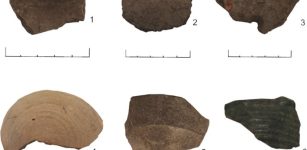 Earliest Evidence Of Wine Consumption In The Americas Found In Caribbean
Archaeology | May 23, 2023
Earliest Evidence Of Wine Consumption In The Americas Found In Caribbean
Archaeology | May 23, 2023 -
 Persephone: Greek Goddess Of The Coming Spring And Lady Of The Land Of The Dead
Featured Stories | Jun 26, 2021
Persephone: Greek Goddess Of The Coming Spring And Lady Of The Land Of The Dead
Featured Stories | Jun 26, 2021 -
 Amazing World’s Largest Mosaic Piece Made By 13 Different Ancient Civilizations At Museum Hotel Antakya
Featured Stories | May 9, 2019
Amazing World’s Largest Mosaic Piece Made By 13 Different Ancient Civilizations At Museum Hotel Antakya
Featured Stories | May 9, 2019 -
 Ancient Mystery Of Egypt’s Black Pyramid – Did It Really Exist?
Featured Stories | Nov 28, 2020
Ancient Mystery Of Egypt’s Black Pyramid – Did It Really Exist?
Featured Stories | Nov 28, 2020 -
 Largest In Europe Underground Church Of Saint-Jean of Aubeterre Built By 12th Century Benedictine Monks
Featured Stories | Feb 12, 2016
Largest In Europe Underground Church Of Saint-Jean of Aubeterre Built By 12th Century Benedictine Monks
Featured Stories | Feb 12, 2016 -
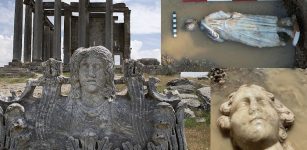 More Greek Gods’ Heads And A Life-Sized Statue Of A Man Unearthed In The Ancient City Of Aizanoi
Archaeology | Dec 28, 2022
More Greek Gods’ Heads And A Life-Sized Statue Of A Man Unearthed In The Ancient City Of Aizanoi
Archaeology | Dec 28, 2022 -
 Remains Of An Ancient Seaport In Asini, Greece Discovered By Underwater Archaeologists
Archaeology | Mar 12, 2025
Remains Of An Ancient Seaport In Asini, Greece Discovered By Underwater Archaeologists
Archaeology | Mar 12, 2025 -
 Extremely Rare 700-Year-Old French Gothic Ivory Casket At Risk Of Leaving The UK
Archaeology | Dec 7, 2022
Extremely Rare 700-Year-Old French Gothic Ivory Casket At Risk Of Leaving The UK
Archaeology | Dec 7, 2022 -
 Famine And Disease Drove The Evolution Of Lactose Tolerance In Europe
Archaeology | Jul 27, 2022
Famine And Disease Drove The Evolution Of Lactose Tolerance In Europe
Archaeology | Jul 27, 2022 -
 Vesta And Her Six Vestal Virgins – Highly Venerated Goddess Of Hearth And Family
Featured Stories | Dec 24, 2019
Vesta And Her Six Vestal Virgins – Highly Venerated Goddess Of Hearth And Family
Featured Stories | Dec 24, 2019 -
 What Can Medieval Skeletons Tell Us About Modern Day Pandemics
Archaeology | Feb 25, 2022
What Can Medieval Skeletons Tell Us About Modern Day Pandemics
Archaeology | Feb 25, 2022 -
 Subterranean Kingdom Of Shahmaran And The Land Of The Snakes
Featured Stories | Aug 17, 2020
Subterranean Kingdom Of Shahmaran And The Land Of The Snakes
Featured Stories | Aug 17, 2020 -
 Unique Ancient Gold Cloth Found In The Necropolis Of Saint-Pierre-l’Estrier Is The Largest Antique Piece Found To Date
Archaeology | Aug 13, 2022
Unique Ancient Gold Cloth Found In The Necropolis Of Saint-Pierre-l’Estrier Is The Largest Antique Piece Found To Date
Archaeology | Aug 13, 2022 -
 Mysterious Nagas: Serpent People Who Live In Secret Underground Cities
Featured Stories | Oct 24, 2017
Mysterious Nagas: Serpent People Who Live In Secret Underground Cities
Featured Stories | Oct 24, 2017 -
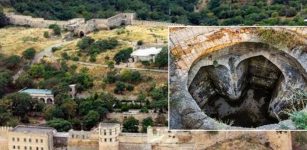 Subterranean Structure In Medieval Naryn-Kala Citadel: Was It The Christian Temple?
Archaeology | Jul 12, 2019
Subterranean Structure In Medieval Naryn-Kala Citadel: Was It The Christian Temple?
Archaeology | Jul 12, 2019 -
 Baffling Archaeological Find At George Washington’s Mount Vernon
Archaeology | Jun 20, 2024
Baffling Archaeological Find At George Washington’s Mount Vernon
Archaeology | Jun 20, 2024 -
 New York Was Once Called New Amsterdam – History Behind The Change Of Name
Ancient History Facts | Jan 14, 2017
New York Was Once Called New Amsterdam – History Behind The Change Of Name
Ancient History Facts | Jan 14, 2017 -
 On This Day In History: Vasco De Gama Departed On First European Voyage To India – On July 8, 1497
News | Jul 8, 2016
On This Day In History: Vasco De Gama Departed On First European Voyage To India – On July 8, 1497
News | Jul 8, 2016 -
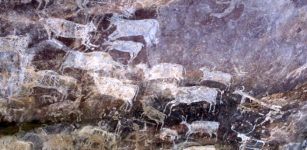 Bhimbetka: Gigantic Open Air Repository Of Prehistoric Art In India
Featured Stories | Jun 11, 2016
Bhimbetka: Gigantic Open Air Repository Of Prehistoric Art In India
Featured Stories | Jun 11, 2016

